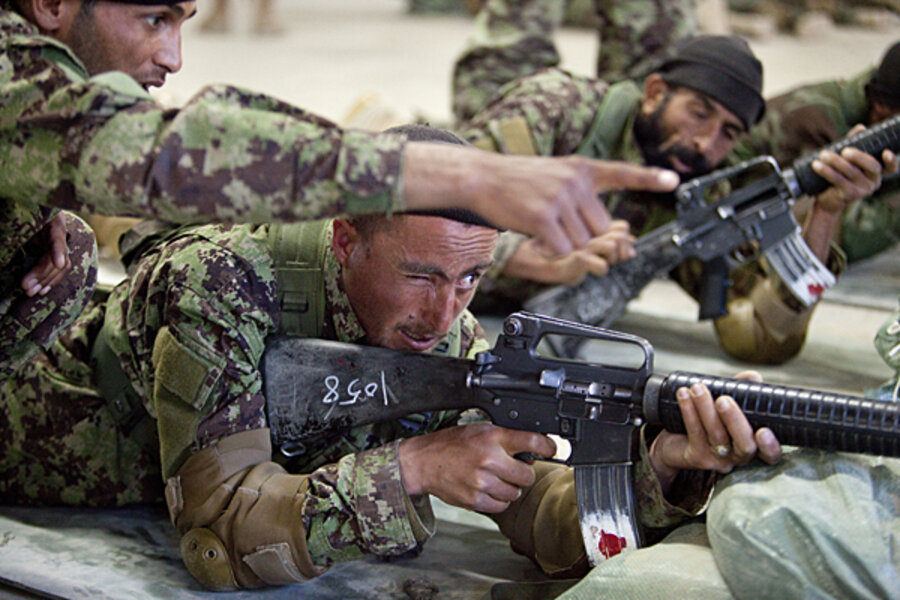Afghan deal on night raids presages longterm US presence
Loading...
| Kabul, Afghanistan
A new agreement between American and Afghan officials has placed long-controversial night raids under the control of local forces.
The compromise comes as a substantial diplomatic breakthrough that will pave the way for a strategic partnership agreement between the two nations. The future of night raids had become a sticking point in negotiations for an agreement that will keep the US committed to Afghanistan for another decade after the 2014 withdrawal deadline.
The partnership, which now appears likely, would keep a contingent of US forces in Afghanistan beyond the 2014 withdrawal date. The agreement would also affirm continuing US economic assistance and determine the size of the Afghan military, among other issues. The strategic partnership is expected to be finalized before the NATO summit on Afghanistan that will take place in Chicago this May.
Night raids are operations usually carried out by special forces after dark to capture or kill members of the insurgency. The raids will still continue, but they will be under the control of Afghan forces, with US involvement. The change is likely to please a large majority of Afghans who viewed night raids as a violation of their national sovereignty and disrespectful to their culture.
“The government has been asking to stop the night raids for many years,” says Mahmoud Khan, a member of parliament from Kandahar. “Night raids have had a big impact on this war in Afghanistan, both positive and negative. Because of the night raids, many of the enemies were defeated in many places, but in some night raids, many civilians were killed.”
Night raids have long been seen as a cornerstone of the US strategy in Afghanistan. Last year alone, there were 2,200 night raids. Although Afghans tend to view night raids as often violent, US officials report that in 90 percent of last year’s night raids no shots were fired. In the remaining 10 percent that resulted in gunfire, there was less than a 1.5 percent civilian casualty rate.
Despite these statistics, Afghans say that night raids remain among the most intimidating US practices here in Afghanistan.
Locals thought shooting spree was part of night raid
At the time it occurred, for example, most locals assumed that US Army Staff Sgt. Robert Bales’s shooting spree last month was part of a night raid. As a result, villagers say that the lone American soldier faced no resistance as he killed 17 Afghan civilians, mostly women and children.
“Whenever people hear shooting, they think there is a night raid. Even the neighbor of the family will try to stay calm and just stay where they are. We believe that if we show a reaction, we’ll be bombed and the entire village could be destroyed,” says Qahir Khan, who lives near the scene of the massacre in southern Afghanistan. “During a night raid, even in the family, when there is shooting inside the house, no one will try to run or move because they believe they’ll also get killed.”
Still, a number of Afghan officials have conceded that despite their problems, night raids have played an integral role in breaking up the leadership of insurgent groups. By giving control of the raids to Afghans, the night operations can continue, but in a way that is more agreeable to locals.
“This agreement will eliminate the public concerns about the night raids conducted here in Afghanistan,” says Davood Moradian, assistant professor of political science at the American University of Afghanistan. Still, he adds, “I don’t think the Afghan forces are ready to take full responsibility because of the needs they have in terms of training, and advanced technology and equipment. We foresee that for a long period of time, there will be a need for US special forces to be with their Afghan counterparts.”
* Zubair Babakarkhail contributed to this report.





